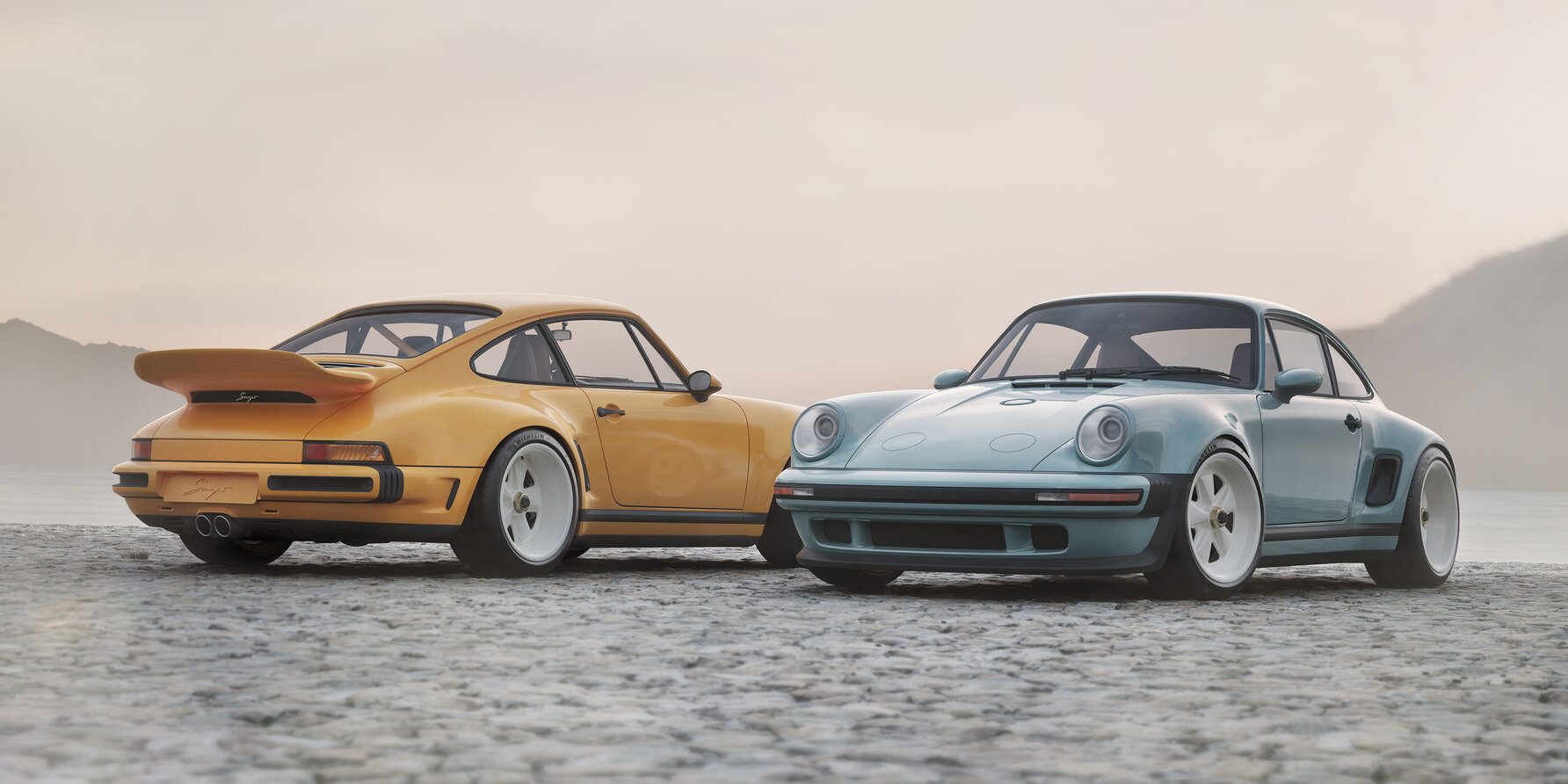
The vests, the hats, the awkward array of monopod legs and deck gun-sized lenses hung around their necks… They move faster than the players—except when they’re holding absolutely still—and they easily walk twice as far, running all over the course in search of the action. And when it gets down to the wire, on the 18th green on the last day, they take their positions, crouching low in a hidden competition of their own, the odd elbow or shoulder making some space as they angle for position, until finally, after days of preparation, if the weather’s right and if the golfer does his job and if the crowd is good and if some idiot in the background doesn’t mess it up, if after rolling forever, at the end of it all, the ball just drops into the hole, then, with a little luck, they get the shot.
“Shooting tournaments is about being in the right place at the right time—and trying to figure out where the right place is going to be”
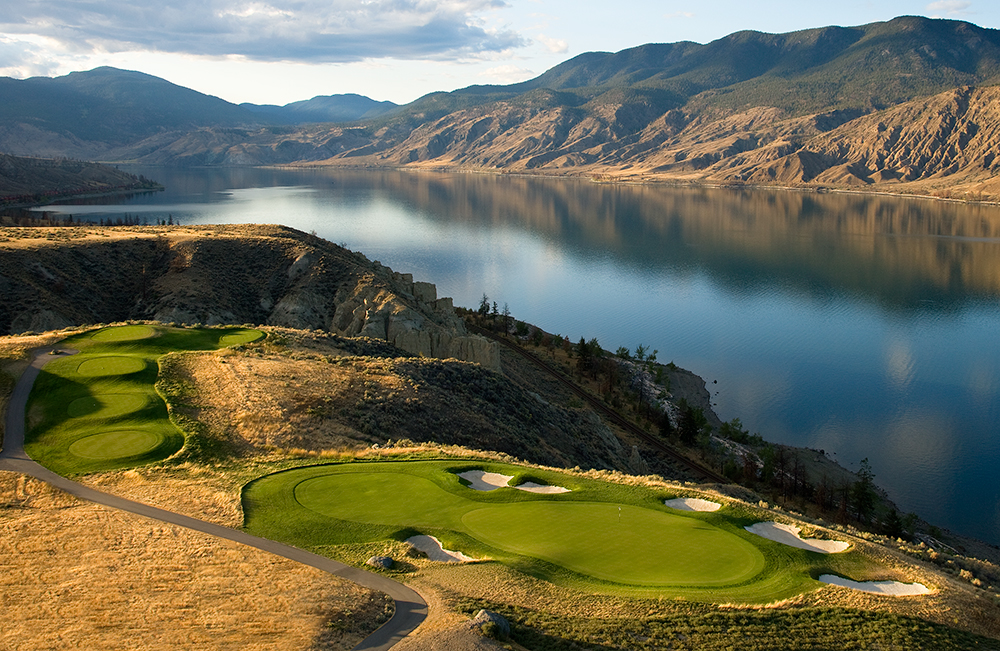
Tobiano
One of Canada’s best tracks, the Thomas McBroom-designed Tobiano is showcased beautifully in this Szurlej photo.
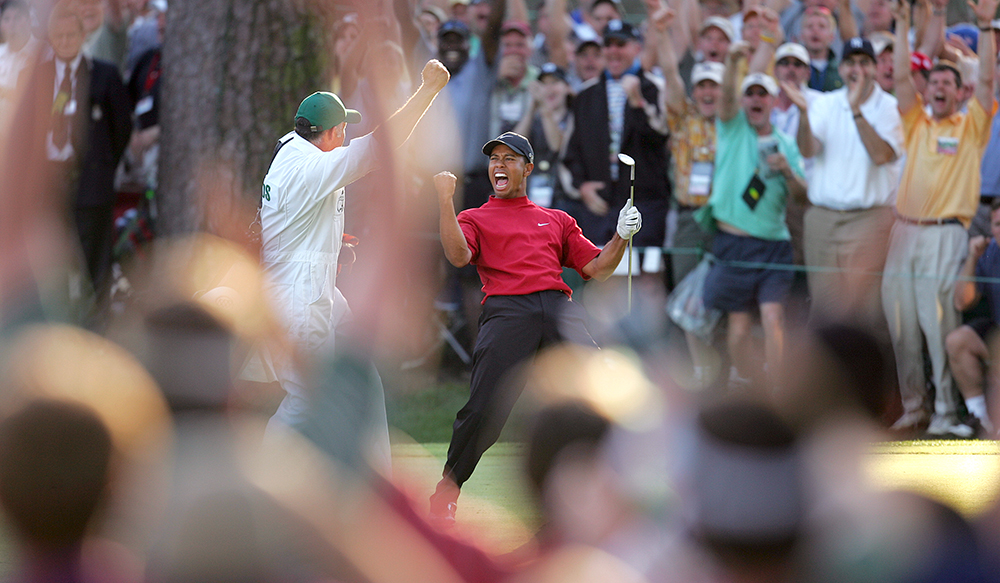
Tiger Woods
Tiger took the Masters with a dramatic chip-in on 16 and a playoff birdie; Stephen Szurlej took one of the best photos ever made at Augusta.
“With golf, I can’t believe the places I’ve been to and the things I’ve gotten to see”
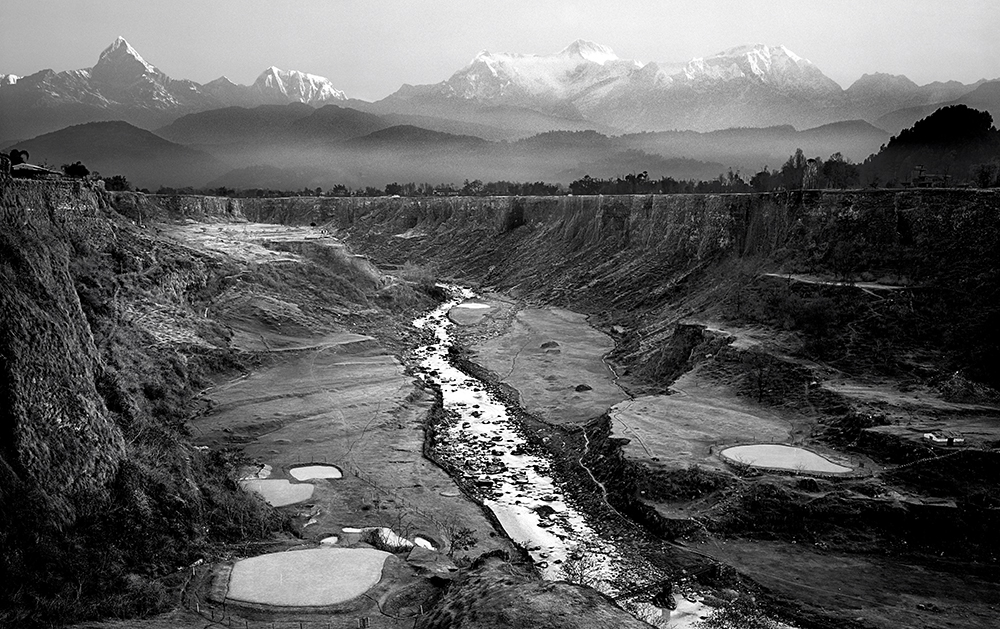
Himalayan GC
Golf Digest Senior Photographer Dom Furore spent a month in the mountains of Nepal and China creating amazing images like this one, of the Himalayan Golf Course near Pokhara, Nepal.
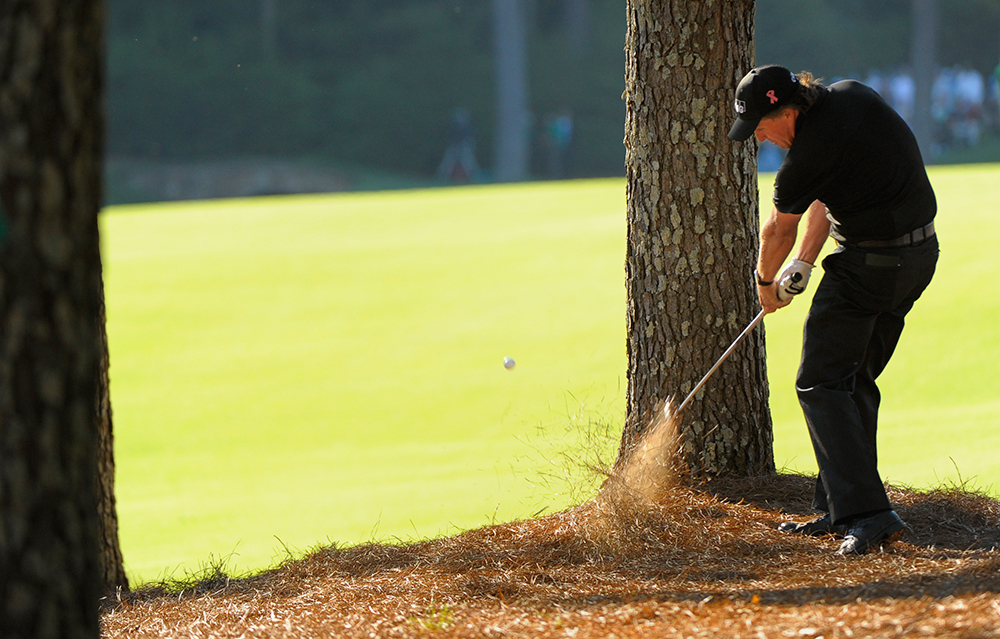
Phil Mickelson
Mickelson’s second shot on #13 en route to his 2010 Masters victory was called the golf shot of the year; Furore’s was just as good, immortalizing the moment.
“You get the dew on the grass that creates a little highlight, the course is pristine, the bunkers are raked, everything’s just there for you… If you get a perfect morning, you can get twice as much done as you can in an afternoon”
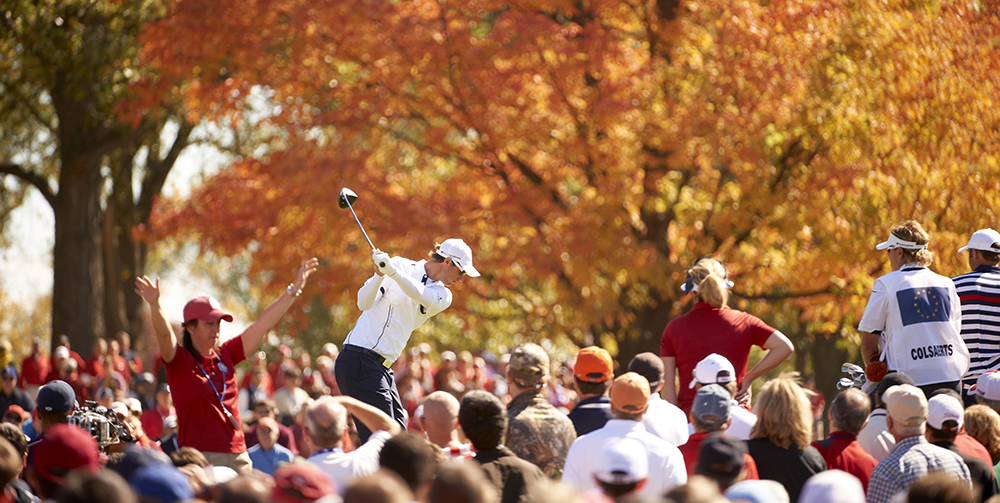
Nicolas Colsaerts
On the first few days of a tourney, Vuich says he looks for “spots to put the players in” for photos. Here, Nicolas Colsaerts stands out during the Ryder Cup at Medinah CC.
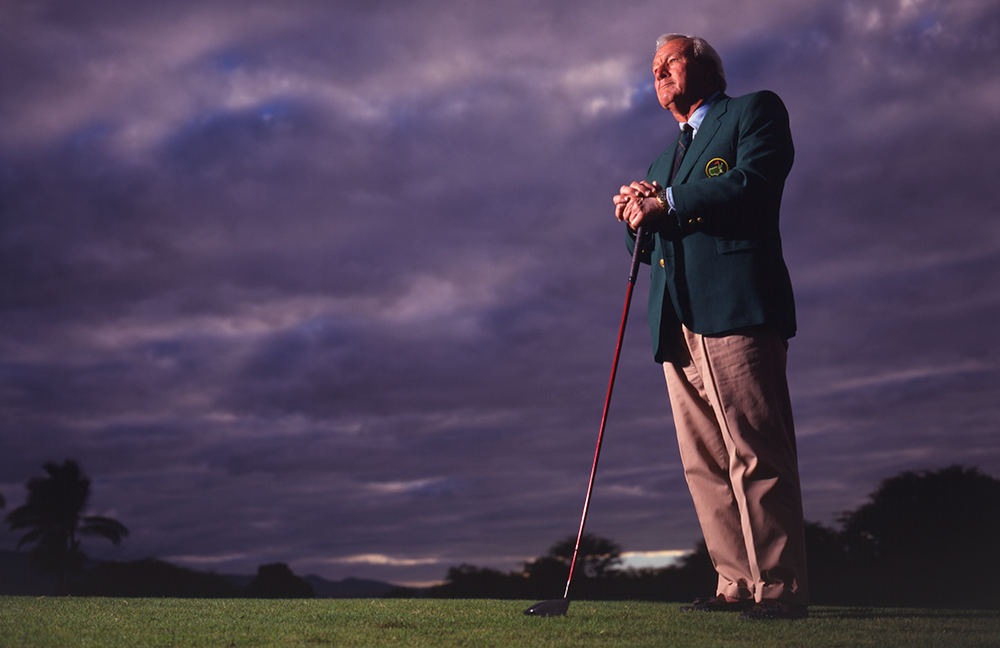
Arnold Palmer
Vuich had to bring Arnie’s green jacket to Hawaii for this SI shot, taken 40 years after Palmer’s first Masters win.
“I wanted to have it handcuffed to my wrist,” he said.
The Getty Images photographer throws some light on the workings of the professional mind and provides a few examples of his own to remind us all why the pros get paid to take pictures—and the rest of us don’t.

Equipment
Although you can get great results with pocket cameras today, the arena in which a pro golf photographer works presents a number of problems… Working distances from the subject means a long lens is a must. Also, today’s high performance SLRs deliver up to 14 frames per second, enabling the photographer to capture the golfer’s swing at full speed.
A high-speed camera gets Poulter’s ball in the perfect position.
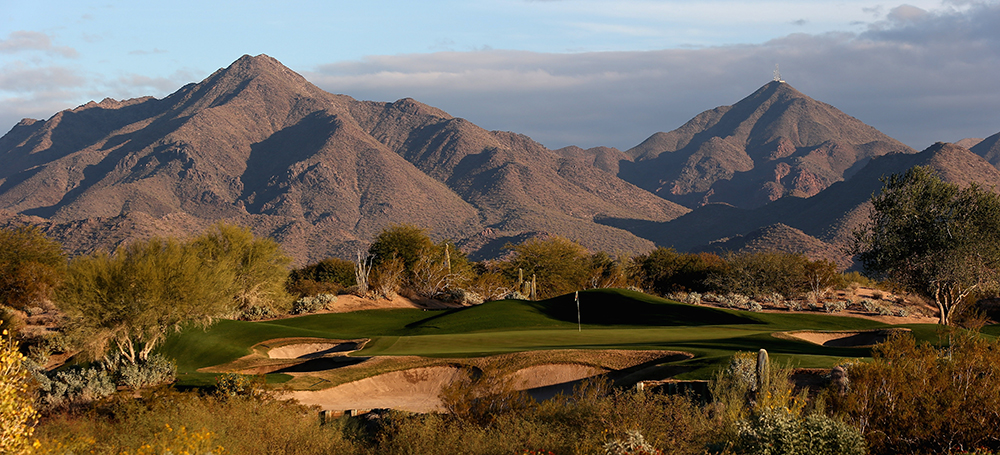
Time of Day
The golf course is not the place for the work-shy photographer. Early morning or late evening light give you the best chance to show the golfer and the golf course at its best. When the sun is low in the sky the contours of the golf course come to life, every hill and hollow is highlighted. Harsh mid-day sun does the course no favors.
Late afternoon light brings shadows to Grey Hawk and the Tallon Course’s No.11.
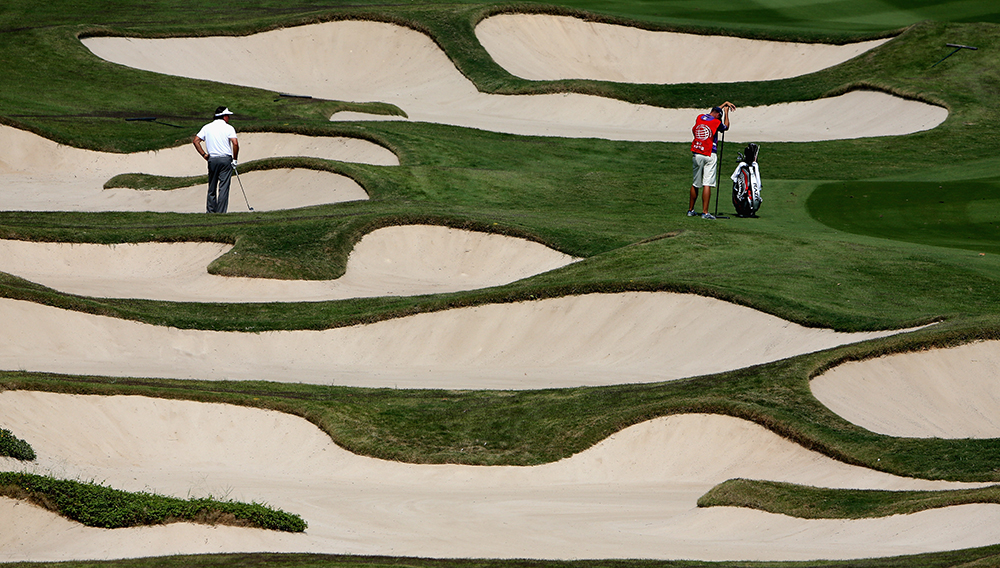
Composition
One of the biggest differences between many professionals and amateurs is that the amateur photographer generally only has the subject in mind when taking a picture. They often fail to see all the other things going on around the subject that are also in the viewfinder.
Positioning behind the action and using the foreground offer a new perspective.
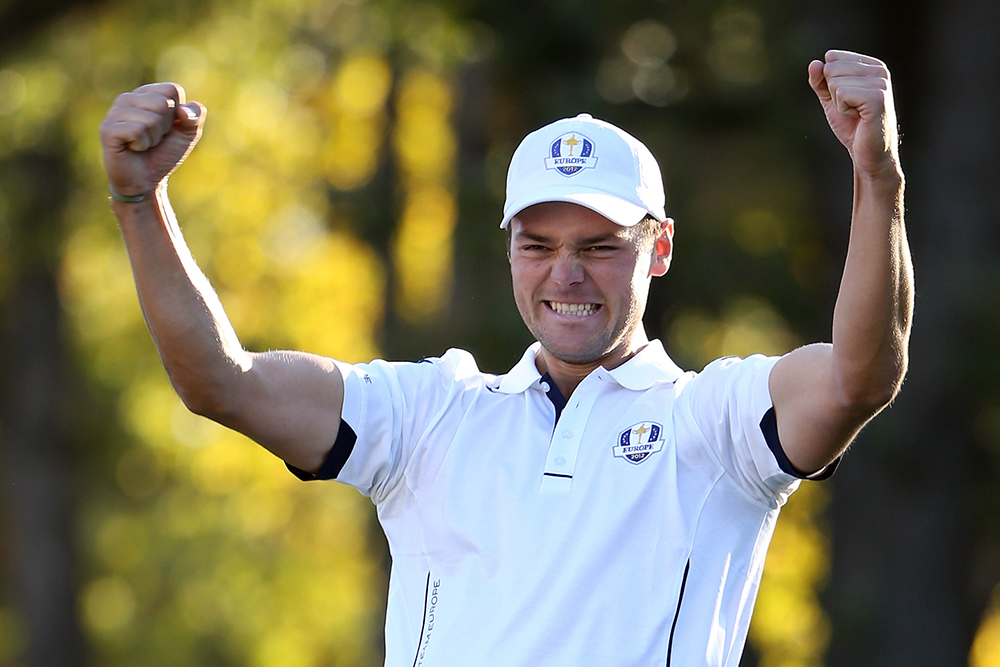
Iconic Image
The moment I’ve taken a picture I know if it’s a “winner” or not. Over the years I have covered hundreds of events and taken many thousands of images, but some images are by their very nature more important than others. An image of a player celebrating a big win or holing a crucial putt may in time become an iconic image. Such images are normally defining moments, the moments in tournaments that affect the outcome or the result. Players in time can also become icons, and then certain images of a player become iconic.
Capturing the moment with a clean background and a euphoric Martin Kaymer.
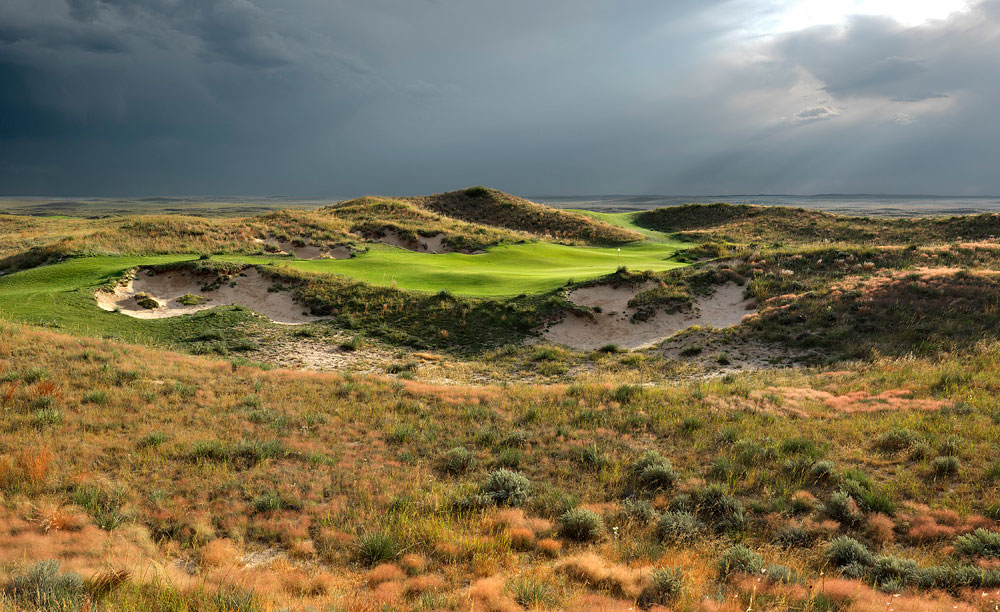
You may not be publishing a book of course photography any time soon or have your work celebrated by myriad publications like photographer Evan Schiller, but that doesn’t mean you can’t snap a likeable shot of your favorite track now and then. Here, Schiller gives the rest of us some advice on how to make a course photo look like a course photo—not a picture of your front yard.
Get Gear
Camera: There are a lot of great cameras now, it depends on what you want to spend. I shoot with a medium format camera, with a sensor that’s 2 ½ times bigger than a 35mm sensor, but I’ve seen good pictures taken on more basic setups. Get the best you can afford.
Lens: You’ll need something wide, in the 24mm to 35mm range. Quality lenses will minimize distortion at the edges of the frame, which is important.
Tripod: Very important to keep things straight and steady.
Get Informed
Early in the morning is best, and know where to be, know when the light will hit the hole you want to photograph. You won’t want the sun directly behind you; it makes for flat light. You’ll want it from the side if possible.
Elevate
I travel with a ladder, but you can get on top of a cart or hill. Any time you can get elevation it’s always better.
Frame It
If I stand in the middle of the fairway and take a picture, I guarantee you’re not going to like the photo. This is a big landscape and you’re putting it into a little frame, you have to make it interesting. I don’t like it when photographers cut things off, like the edges of tees or bunkers. There are ways to compose it where the lines of the bunker or tee lead into the shot.
Level It
One of my pet peeves is when people don’t get horizons straight. Make sure the horizon is straight.
Steady Now
Use a tripod; you can set it up on top of the cart if possible. You’ll want maximum depth of field and quality, which will mean a low ISO, a small aperture and thus a slower shutter speed. I like to shoot at ISO 50 or 100, which typically offers the best quality and smoothest photo possible, and I’m usually shooting at f19, f22, f27… Sometimes though, if you’re elevated and the wind is blowing, things are rocking back and forth, even a little bit, and so you have to go with a faster ISO. I’ll go with a faster ISO so I can keep my depth of field.
Shoot
Use a cable release or your camera’s self timer. This keeps your hands off the camera while the picture is being taken, eliminating at least one cause of camera shake. The most work goes into the scouting, the anticipating and the prepping. Pushing the shutter is the easy part.
Adjust It
Most of the time, what comes out of the camera never comes out the way you want it, it seems a little flat. Using Photoshop or other software, you want to bring out what’s there, make it look like what it looked like, which means maybe you have to brighten up a shadow a little bit, sometimes take out divots or a cart track or rope. Be careful because you don’t want it to look unnatural.
Be Different
There have been thousands of photos taken of the 7th hole at Pebble Beach with the waves crashing and a beautiful sunny sky. It’s nothing unique. I go to Pebble Beach once or twice a year to shoot, and people will think I’m crazy because it’ll be a beautiful sunny day and I’ll say I’m not going out. Sometimes what makes the shot is an unusual circumstance, something different or unnatural where weather is concerned. I was at Ballyneal [Golf Club] in Colorado and there were thunderstorms all over the place. There were these little breaks, and these sunbeams would come through the dark clouds. I just sat at this one place and after a while, just like God calling or something, this beam of light comes down and hits the green. I was out there for, I don’t know, a couple of hours, and I got five minutes of that. It made the shot.
More of Evan Schiller’s course photography can be found at golfshots.com. His ebook, “Golf’s Unfolding Drama,” is available via his website and from the iTunes store.
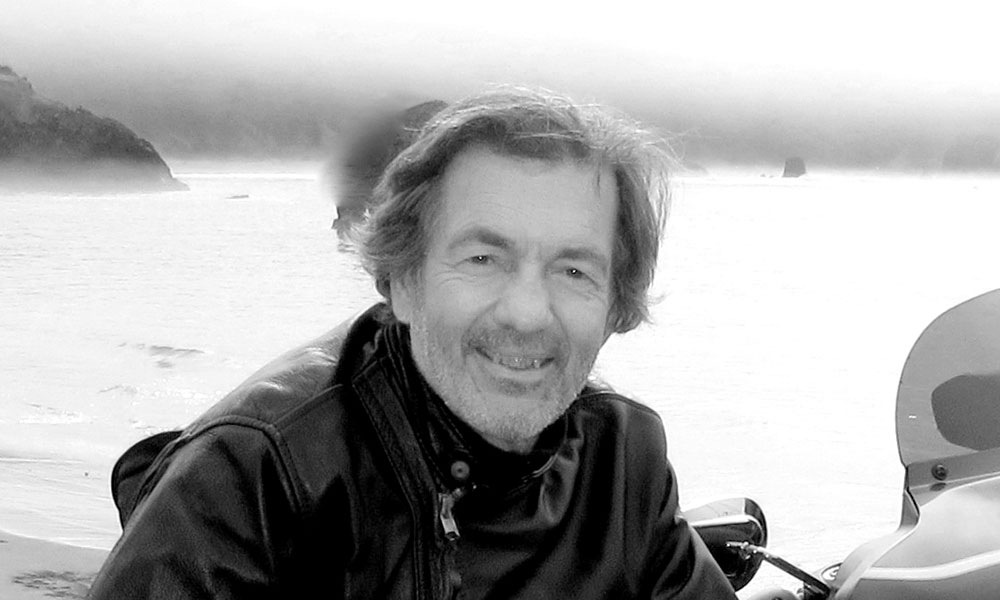
Long the photographer of Golf Digest’s “Best New Courses,” Stephen Szurlej’s resume is a sort of album of golf’s greatest shots. His work at the Masters, in particular, a tournament he’s covered for over two decades, is sublime. The iconic 1986 picture of Nicklaus raising his putter on 17, his. Norman falling to his knees on 15 in 1996 after failing to chip in, his again. Tiger in 1997, Tiger in 2005, and so on and so on. If the respect of one’s peers is a true measure of status, Dom Furore’s assessment of Szurlej says it all: “If my kid’s life depended on somebody coming back with the shot, I’d send Steve.”
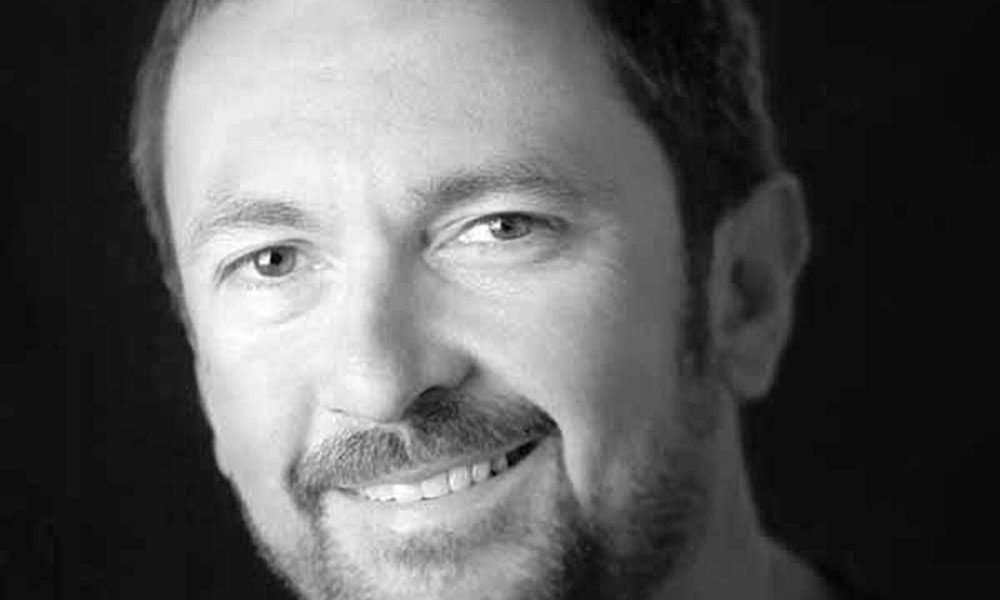
To call Dom Furore well-traveled is understatement indeed. He’s hitched a ride in Burundi, stayed at the Hotel Rwanda and, more recently, spent a month in China and Nepal shooting remote golf courses—just to name a few adventures. As a Senior Staff Photographer at Golf Digest for more than two decades, Furore has covered nearly every aspect of the game, shooting portraits, tournaments and golf courses all over the world, in addition to side projects of his own. A winner of Life Magazine’s prestigious Alfred Eisenstadt Award, we’d happily carry his photo gear if he ever needed an assistant.
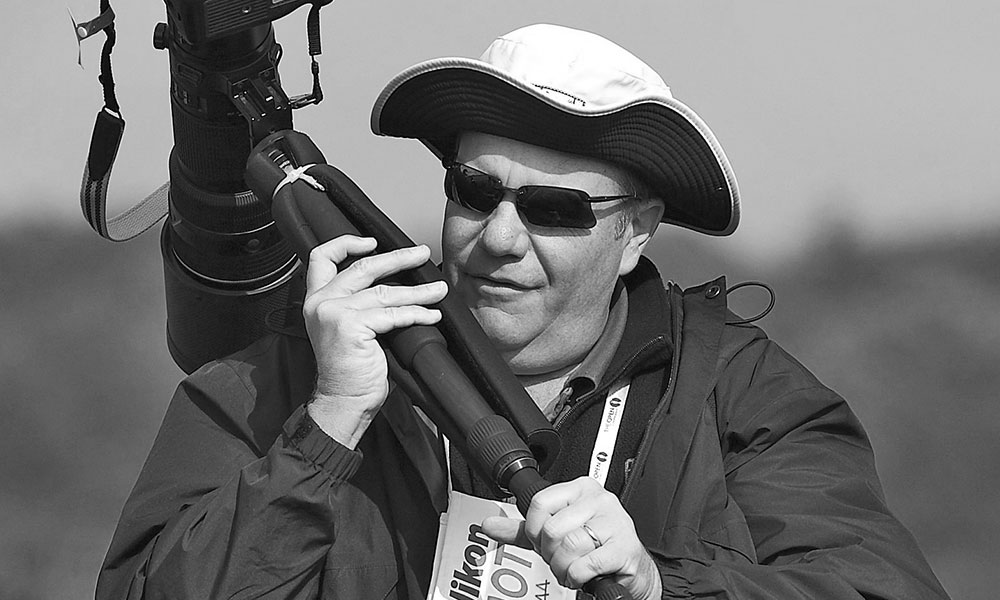
A thoughtful image-maker who’s able to discuss the how and why of what he does—and to make it understandable to the rest of us—Vuich’s images speak volumes on their own. No wonder, then, that so many have graced the cover of Sports Illustrated, to which Vuich frequently contributes, and not just with golf. The World Press Photo Gold Medalist’s work can also be found in Golf Magazine and other publications, along with, we’re guessing, appearing on the walls of numerous photo fans’ rooms.
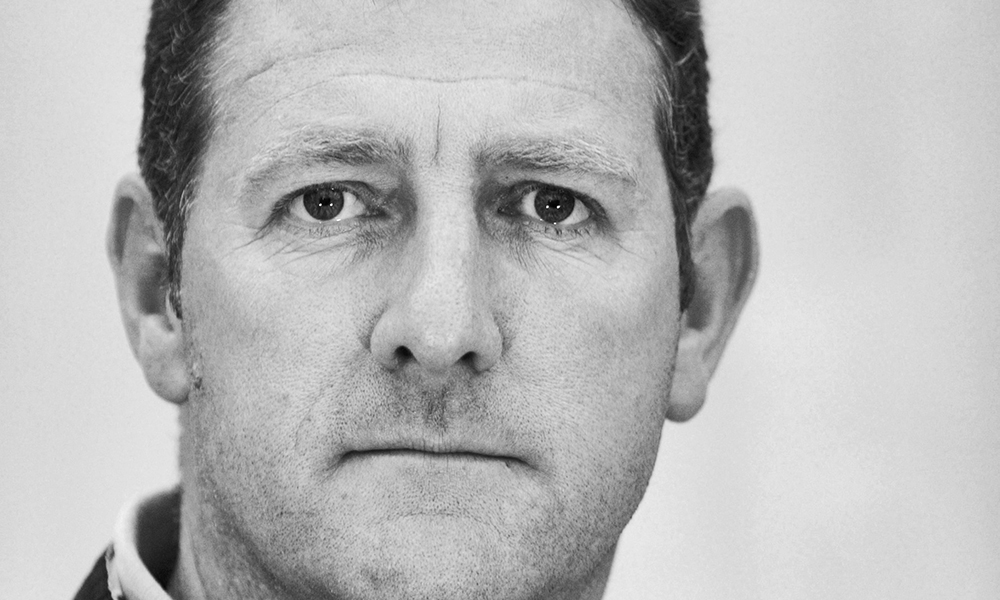
A common sight at top golf tourneys and soccer events shooting for Getty Images, Ross Kinnaird is amongst the top imaging professionals in the industry. Kinnaird has been with Getty for more than 15 years, shooting photos that publications around the world depend on to satisfy their readers. More than that, as a former director for a different photo agency, he understands the sports photo business at all levels.
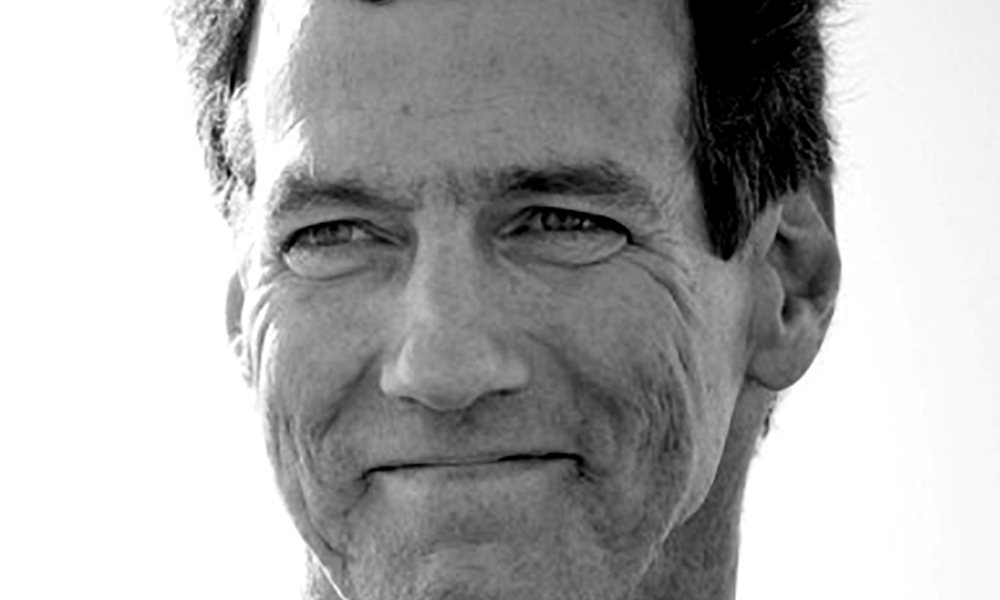
Former PGA professional Evan Schiller competed in pro golf from 1983 to 1989, making appearances in professional tournaments around the world and on the PGA Tour, including the U.S. Open. He brings that perspective to his work as a photographer, which has been showcased in a number of publications, including Golf Digest and Travel & Leisure Golf. Known for precise and dynamic course photography with incredible attention to detail, Schiller’s work is showcased in a number of books, an ebook and innumerable prints of some of the world’s best courses.
Follow Us On


| Cookie | Duration | Description |
|---|---|---|
| cookielawinfo-checkbox-analytics | 11 months | This cookie is set by GDPR Cookie Consent plugin. The cookie is used to store the user consent for the cookies in the category "Analytics". |
| cookielawinfo-checkbox-functional | 11 months | The cookie is set by GDPR cookie consent to record the user consent for the cookies in the category "Functional". |
| cookielawinfo-checkbox-necessary | 11 months | This cookie is set by GDPR Cookie Consent plugin. The cookies is used to store the user consent for the cookies in the category "Necessary". |
| cookielawinfo-checkbox-others | 11 months | This cookie is set by GDPR Cookie Consent plugin. The cookie is used to store the user consent for the cookies in the category "Other. |
| cookielawinfo-checkbox-performance | 11 months | This cookie is set by GDPR Cookie Consent plugin. The cookie is used to store the user consent for the cookies in the category "Performance". |
| viewed_cookie_policy | 11 months | The cookie is set by the GDPR Cookie Consent plugin and is used to store whether or not user has consented to the use of cookies. It does not store any personal data. |